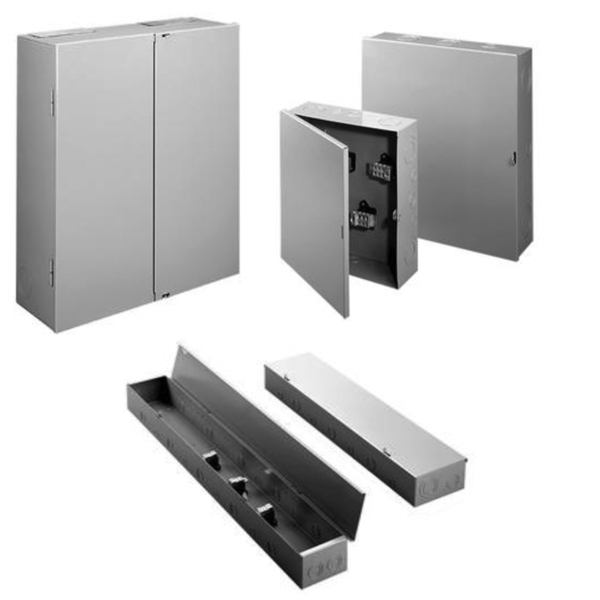Canadian Cabinets and Splitters

RSP Supply offers a comprehensive selection of Canadian cabinets and splitters from nVent Hoffman, designed to meet recognized Canadian performance and safety standards. These enclosures are independently tested and certified by the Canadian Standards Association (CSA), making them suitable for regulated electrical installations across Canada. Available in a wide range of sizes - from 12" to 72" in height and 6" to 48" in width - these products support flexible installation requirements for utility, commercial, and industrial environments.
nVent Hoffman splitter boxes and splitter troughs are engineered to divide feeder circuit conductors into multiple branch circuits. They are equipped with pre-installed terminal blocks for 3- and 4-wire power distribution systems. Splitter boxes feature hinged doors with pull latches and are constructed from 14 or 16 gauge painted steel, while splitter troughs use 14 gauge painted steel with a hinged cover and include a single-point ground lug for proper grounding.
Metering enclosures are designed to house metering transformers and instrument assemblies in indoor applications. These enclosures include panels for potential and current transformers, a prepunched accessory, and a four-lug splitter block. Two-door models feature top-mounted gland plates for meter connections. Select HQ models meet Hydro-Québec requirements, supporting compliance with the standards of Quebec’s public electric utility.
FAQs
Q: What standards do Canadian cabinets and splitters meet?
These enclosures are tested and certified by the Canadian Standards Association (CSA), ensuring compliance with recognized Canadian safety and performance requirements.
Q: What is the purpose of a splitter box or splitter trough?
Splitter boxes and troughs divide feeder circuit conductors into multiple branch circuit conductors for organized and controlled power distribution.
Q: What materials are used in nVent Hoffman splitter enclosures?
Splitter boxes and metering enclosures are made from 14 or 16 gauge painted steel, while splitter troughs are constructed from 14 gauge painted steel for added durability.
Q: What wiring configurations are supported?
These products include pre-installed terminal blocks designed for both 3-wire and 4-wire power distribution systems.
Q: What are HQ metering enclosure models?
HQ models are metering enclosures that meet Hydro-Québec requirements, making them suitable for installations within the province of Quebec.
Why Buy Canadian Cabinets and Splitters from RSP Supply
RSP Supply provides a dependable source for CSA-certified Canadian cabinets and splitters from nVent Hoffman. Our selection supports compliant electrical distribution, metering, and utility applications across Canada. Customers rely on RSP Supply for accurate product information, consistent availability, and industrial-grade enclosures built to meet regional electrical standards.

